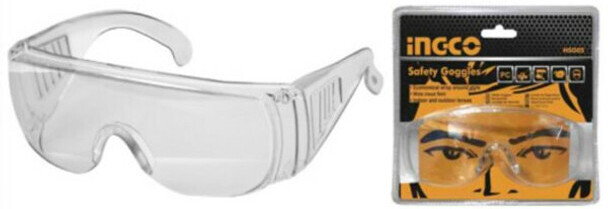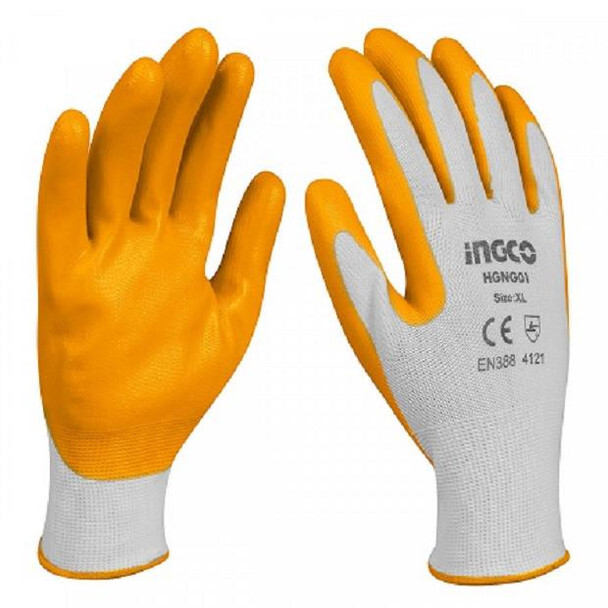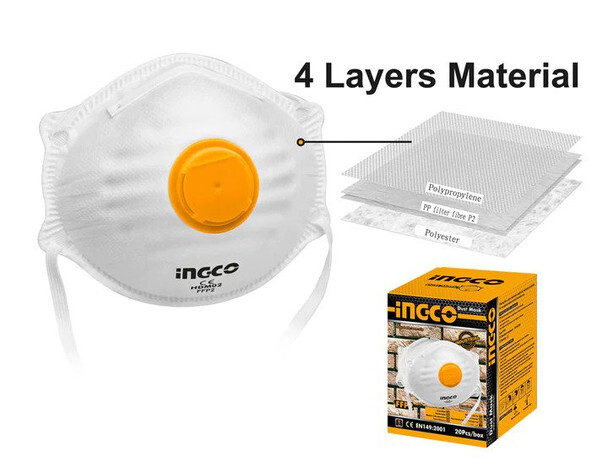Industrial Safety Gear for Applying Floor Paint
Introduction
Industrial floor painting is a critical process in warehouses, manufacturing plants, and commercial spaces, enhancing both durability and safety. However, applying industrial-grade floor coatings, such as epoxy, polyurethane, and anti-slip paints, exposes workers to chemical fumes, skin irritation, and slip hazards.
Ensuring proper safety measures and using the right protective equipment (PPE) is crucial to minimize health risks and workplace accidents. This guide explores the key hazards of industrial floor painting and outlines the essential safety gear required to maintain a safe working environment.
Read more...Floor Paint Safety: Precautions to Take When Painting Your Floors
Key Takeaway
- Essential Safety Equipment – Proper protective gear, including respirators, gloves, goggles, coveralls, and anti-slip boots, is crucial for preventing health hazards during industrial floor painting.
- Respirator Protection – Using a high-quality respirator prevents inhalation of toxic fumes and volatile organic compounds (VOCs), ensuring worker safety in enclosed spaces.
- Chemical-Resistant Gloves – Wearing nitrile or neoprene gloves protects hands from harmful chemicals and solvents commonly found in industrial floor paints.
INGCO Industrial Safety Goggles, HSG05
Key Hazards of Industrial Floor Painting
Chemical Exposure and Inhalation Risks
Most industrial-grade floor paints contain volatile organic compounds (VOCs) and solvents that emit toxic fumes during application. Prolonged exposure to these chemicals can lead to:
- Short-term effects: Headaches, dizziness, nausea, and throat irritation.
- Long-term effects: Respiratory issues, skin disorders, and liver or kidney damage.
- High-risk environments: Poorly ventilated spaces or confined areas increase inhalation risks.
Solution: Proper respiratory protection is essential to prevent inhalation of fumes.
Skin and Eye Protection Risks
Direct contact with paint, hardeners, and thinners can cause severe skin irritation, burns, or allergic reactions.
- Epoxy and polyurethane coatings can cause chemical burns if absorbed through the skin.
- Paint splashes can lead to eye injuries or long-term vision damage.
Solution: Use chemical-resistant gloves, protective clothing, and safety goggles to prevent skin contact and eye irritation.
Slips, Falls, and Physical Hazards
- Wet floor coatings are extremely slippery and increase the risk of slips and falls.
- Improper footwear may lead to accidents, especially in high-traffic areas.
- Working at heights (using ladders or scaffolding) increases the risk of fall-related injuries.
Solution: Wear slip-resistant safety boots and use caution signs to alert workers of wet areas.
Essential Industrial Safety Gear for Applying Floor Paint

Essential Industrial Safety Gear for Floor Painting
Respiratory Protection
Paint fumes contain harmful solvents and VOCs that require proper air filtration and protection.
Best Options:
- N95 masks – Suitable for low-VOC paints in well-ventilated areas.
- Half-face respirators with organic vapor cartridges – Effective for moderate chemical exposure.
- Full-face respirators – Ideal for high-VOC paints or enclosed spaces.
- Powered Air-Purifying Respirators (PAPRs) – Best for long-duration industrial painting projects.
Tip: Always check that respirator filters are suitable for organic vapors and chemical exposure.
Protective Clothing and Coveralls
Industrial painting requires full-body protection to prevent chemical burns and skin absorption.
Best Options:
- Disposable Tyvek suits – Lightweight, chemical-resistant, and ideal for single-use projects.
- Heavy-duty chemical-resistant coveralls – Suitable for high-exposure jobs.
- Flame-resistant coveralls – Recommended for paint booths with high heat exposure.
Tip: Always choose coveralls with elastic cuffs to prevent paint seepage onto the skin.
Eye and Face Protection
Paint splashes and airborne particles pose a serious risk to the eyes and face.
Best Options:
- Chemical splash goggles – Protect against liquid paint and solvent splashes.
- Full-face shields – Provide additional protection when using high-pressure sprayers.
- Safety glasses with anti-fog coating – Useful for paint roller applications in humid environments.
Tip: Always clean goggles and shields regularly to maintain clear visibility.
Hand Protection (Gloves)
Choosing the right gloves is crucial for preventing chemical burns and hand fatigue.
Best Options:
- Nitrile gloves – Excellent for solvent-based paints.
- Neoprene gloves – Provide superior chemical resistance.
- PVC-coated gloves – Ideal for handling corrosive coatings.
Tip: Avoid latex gloves, as they offer minimal resistance to industrial paints and solvents.
Foot Protection (Safety Boots)
Industrial floor painting requires proper footwear to prevent chemical exposure, slips, and impact injuries.
Best Options:
- Slip-resistant safety boots – Prevent accidents on wet, freshly painted surfaces.
- Chemical-resistant rubber boots – Protect against spills and chemical absorption.
- Steel-toe safety boots – Provide added protection in high-impact environments.
Tip: Ensure boots have sealed seams to prevent paint seepage and chemical absorption.
Hearing Protection (For Noisy Environments)
If using industrial paint sprayers, grinders, or mechanical mixers, hearing protection is essential.
Best Options:
- Foam earplugs – Reduce noise levels in moderate environments.
- Noise-canceling earmuffs – Ideal for high-decibel industrial workspaces.
Tip: Always check if the hearing protection device (HPD) meets safety standards (e.g., NRR rating of 25dB or higher).
Additional Safety Measures for Floor Painting Jobs
Proper Ventilation and Airflow
Paint fumes and volatile organic compounds (VOCs) require proper ventilation to ensure worker safety.
Best Practices:
- Use exhaust fans and air circulators in enclosed areas.
- Open doors and windows to allow airflow and fume dispersion.
- Wear respirators when working in confined spaces.
Tip: If natural ventilation is insufficient, install mechanical ventilation systems.
Safe Handling and Storage of Paints and Solvents
Improper handling of industrial paints, thinners, and hardeners can lead to fires, spills, or chemical burns.
Safety Guidelines:
- Label all hazardous materials clearly.
- Store paints and solvents in fire-resistant cabinets.
- Keep flammable materials away from ignition sources.
Tip: Follow OSHA’s Hazard Communication Standard (HCS) for proper labeling and storage.
Emergency Preparedness
Every floor painting site must have an emergency response plan in place.
Essential Emergency Equipment:
- First-aid kits for chemical exposure.
- Eyewash stations and emergency showers for quick decontamination.
- Fire extinguishers and spill containment kits to handle accidents and leaks.
Tip: Train workers in emergency response procedures to ensure quick action during incidents.
Preventing Slip and Fall Hazards
Slips and falls are major risks during floor painting, especially on freshly coated surfaces.
Best Practices:
- Use “Wet Paint” warning signs in work areas.
- Wear slip-resistant boots to prevent falls.
- Apply anti-slip coatings for added safety in high-traffic areas.
Tip: Allow proper drying and curing time before allowing foot traffic on painted floors.
Dust Mask with Breath Valve INGCO HDM02 (N95)
Frequently Asked Questions
1. What safety gear is essential when applying industrial floor paint?
Essential safety gear includes respirators, protective gloves, safety goggles, chemical-resistant coveralls, and anti-slip boots to protect against paint fumes, skin irritation, and accidental spills.
2. Why is a respirator necessary for industrial floor painting?
A respirator prevents inhalation of toxic fumes and volatile organic compounds (VOCs) present in industrial floor paints, ensuring worker safety.
3. How do I choose the right gloves for industrial floor painting?
Opt for chemical-resistant gloves, such as nitrile or neoprene gloves, to protect against harsh solvents and chemicals found in floor paints.
4. What type of footwear is best for floor painting in industrial settings?
Anti-slip, chemical-resistant boots provide grip and protection, reducing the risk of slips and exposure to hazardous materials.
5. How should safety gear be maintained after floor painting?
Clean reusable gear properly with appropriate cleaners, store it in a dry, ventilated space, and replace disposable items after use to maintain safety standards.
Related Articles
Epoxy Floor Coating For Industrial Floor
The Science of Floor Paint: How it Works and What to Expect
Conclusion
Ensuring the right industrial safety gear is used while applying floor paint is critical for worker protection and compliance with safety regulations. From respirators to chemical-resistant gloves and boots, proper equipment minimizes risks and enhances productivity. By prioritizing safety, businesses can maintain a secure working environment while achieving high-quality floor coating results.
For high-quality industrial safety gear tailored to floor painting applications, visitGZ Industrial Supplies today! Explore our wide range of protective equipment designed for maximum safety and efficiency in industrial settings.










